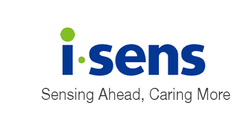
Self-Monitoring of Blood Glucose
What Is Self-Monitoring of Blood Glucose?
Self-monitoring of blood glucose (SMBG) is an important part of diabetes management.1 SMBG involves pricking a finger to obtain blood sample for a blood glucose meter, which shows the current blood glucose concentration to the user.2 Glucose monitoring is a useful tool that helps assess response to therapy, prevent hypoglycemia, and guide changes to medication, diet, and exercise.
When Should SMBG Be Used in Type 2 Diabetes?
The use and frequency of a glucose monitor depend on the individual’s specific needs and goals and insulin regimen.1 Individuals may choose to check their blood glucose levels at various points during the day, such as before and after meals.
The American Diabetes Association (ADA) recognizes that in individuals with type 2 diabetes mellitus (T2DM) using basal insulin but not intensive insulin therapy, monitoring fasting blood glucose levels with glucose monitors may help achieve glycemic targets and lower hemoglobin (Hb) A1C by informing insulin dose adjustments. Routine blood glucose monitoring have limited clinical value in individuals with T2DM who do not take insulin.1,3 However, glucose monitoring may still play a role in newly diagnosed individuals,4,5 particularly when changing medication, diet, and/or physical activity levels when the information is appropriately integrated into diabetes self-management plan.1
When Should SMBG Be Used in Type 1 Diabetes?
Regular monitoring of blood glucose levels is encouraged in individuals on intensive insulin therapies such as insulin pump therapy or multiple daily injections.1 Frequent glucose monitoring can result in fewer acute complications and improved HbA1c levels in individuals with type 1 diabetes mellitus. Although individual needs vary, utilizing glucose monitors 6-10 times/day may be appropriate. Glucose levels should be monitored on the following occasions:
- Before meals and snacks
- At bedtime
- Occasionally after meals and snacks
- Before engaging in physical activity
- Before engaging in other important activities (eg, driving)
- When hypoglycemia or hyperglycemia is suspected
- While treating for hypoglycemia
When Should SMBG Be Used With Continuous Glucose Monitoring?
Although some continuous glucose monitors (CGMs) are approved for use without glucose monitors, the ADA reiterates the U.S. Food and Drug Administration’s recommendation that everyone with CGM must have access to blood glucose meters.1 Glucose monitoring can be useful if calibration is needed, when waiting for warm-up, when a CGM device is suspected to be inaccurate, if a CGM gives a warning sign, and in clinical situations with rapidly changing blood glucose levels.
What Are the Target Ranges?
Here are the glycemic target recommendations by the ADA for non-pregnant individuals with diabetes:6
| Preprandial (Before Meal) Plasma Glucose | 80-130 mg/dL |
| Peak Postprandial (After Meal) Plasma Glucose | <180 mg/dL |
|
References: |
(Disclaimer)
The content of this article is intended to provide a general information and knowledge on the subject matter. The views expressed in newsletters, articles, and blogs in the i-SENS USA website are not necessarily those of i-SENS Incorporated, i-SENS USA Incorporated or our publishers. Medical or nutritional information on i-SENS USA website is not intended to replace professional medical advice – you should always consult a specialist with any questions about your specific circumstances.





Add a comment